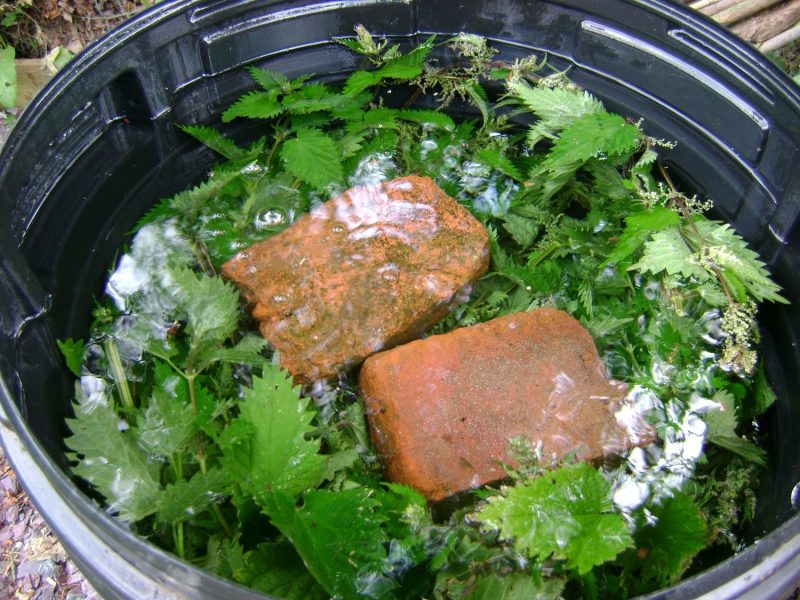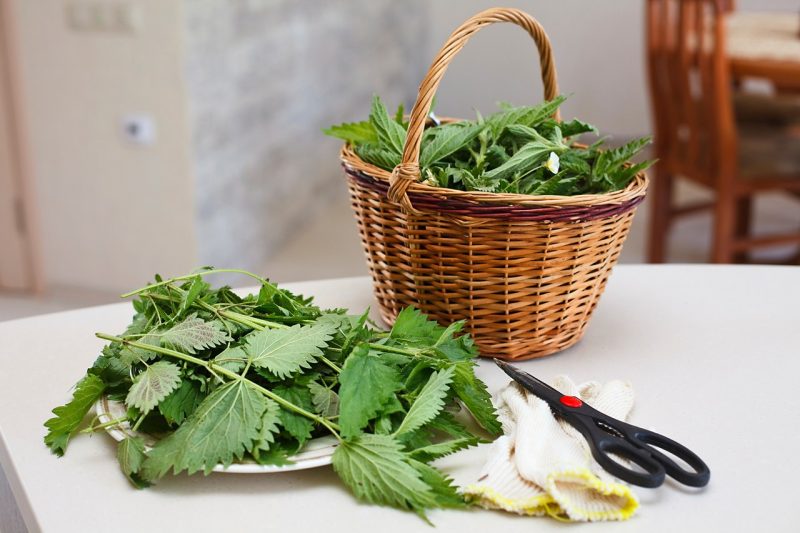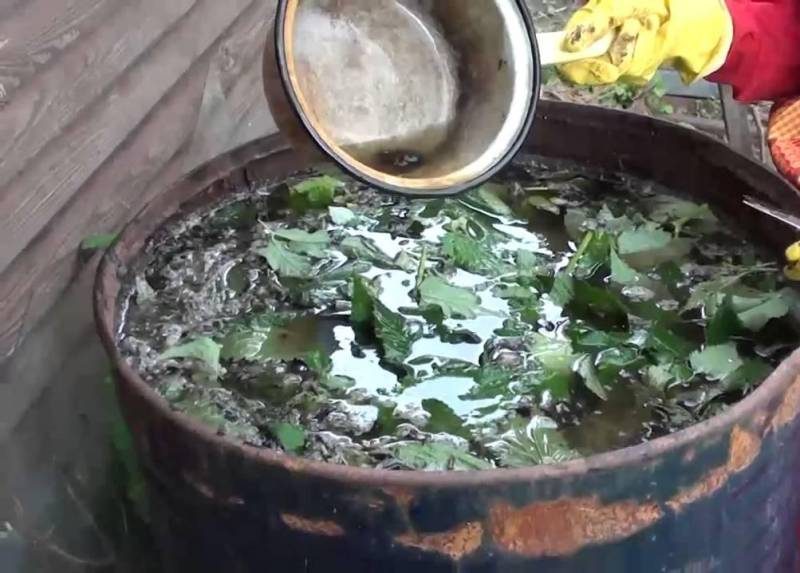Nettle, which is one of the most hated weeds by gardeners, can be an excellent fertilizer for cultivated plants. If you properly prepare the fertilizer from nettle for plants, then you can do without chemical fertilizing. Knowing all the benefits of nettle fertilizer, the gardener will not be able to simply throw out the weathered weeds.
Material Content:
For which plants is nettle fertilizer useful?
Before applying fertilizers from nettle, you need to know exactly what plants the product is suitable for. Nettle compounds are almost universal top dressing. The restrictions for its use are minimal.
Vegetables and berries
Nettle can feed most cultivated plants.

The exceptions are:
- bean
- garlic,
- onion,
- turnip,
- radish.
When nettles are added to the cucumbers, the process of fruit setting and the formation of new lashes is activated. With this top dressing, crop productivity is significantly increased.
The high potassium content in green fertilizer allows it to be used for tomatoes and strawberries. In this case, the fruits and berries gain the maximum size and maximum amount of sugar. Nettle tomato fertilizer is carried out until the fruit is completely poured. Nettle fertilizer also increases crop yields and makes them more resilient to adverse weather conditions.
When making nettle fertilizers for your planting, remember that all plants, in addition to minerals, also need organic elements. Because of this, feeding with a solution of rotten chicken droppings or mullein should also be carried out.
Flowers and houseplants
Nettle dressing is also used to fertilize flowers and houseplants. There are no restrictions on them, but you need to use basic fertilizer without adding yeast, which is mainly required for vegetable crops.
How to cook at home?
To obtain a nutritional composition, you need to take only the nettle that is collected before flowering. As soon as the grass blooms, the content of minerals in it falls, and it becomes useless as a fertilizer.

After collecting, the green raw materials are qualitatively crushed and, having filled them with 1/3 of a plastic barrel (metal cannot be used), they are poured with water, slightly underfilled to the edge of the tank, since during the fermentation the fertilizer volume will increase and it can overflow over the edge. In order to prevent insects from entering the barrel, it is covered with a cloth, but not with a film, since it is important that the air supply is constant and high-quality.
The smell of fertilizer, as soon as the fermentation process begins, becomes especially unpleasant. Because of this, it is not necessary to have a barrel with the product near the recreation areas. In order to slightly reduce the stench from a stray nettle, it is recommended to pour a handful of ash into it or throw a root of valerian.
You can apply fertilizer after 14 days. In order to halve the time of preparation of fertilizer, it is recommended to put the barrel with the composition in the sun. Heat is a catalyst for reactions in the composition. Every day, before the end of the process, nettle infusion should be mixed. After fermentation, the composition is better filtered. It is recommended to use the product soon after preparation, since during storage it loses its useful properties.
Nettle fertilizer can be enriched with additional components.
- Fertilizer with yeast. Only live yeast is used. If necessary, they can be replaced with bread, but this is not so effective. Such an additive to nettles allows you to prepare fertilizer especially quickly. Water in a barrel in this situation is not added to 1/3. Nettle infusion will roam very violently.
- Adding Dandelion. Like nettle, it is harvested before flowering. After a little drying, the plant is crushed and added in a small amount to nettle. Otherwise, the process of preparing fertilizer remains the same.
If desired, plants like parsley, yarrow, shepherd’s bag and chamomile can be added to nettles. This is done in the same way as dandelion. Nettle and grass green fertilizer is a very strong growth stimulant for garden crops.
Nettle infusion: useful properties
The use of nettle infusion is the easiest way to provide plants with a whole complex of useful substances. Green fertilizer belongs to the category of nitrogen and makes up for the deficiency of mineral compounds in plants.

With him, cultures receive:
- nitrogen;
- potassium;
- iron;
- magnesium;
- calcium;
- zinc;
- manganese.
Also in the infusion is a high level of vitamin K1, which is necessary for proper photosynthesis in plants.
The main properties of nettle composition useful for fed plants are:
- strengthening the root and stimulating its proper development;
- growth stimulation;
- increased resistance to major diseases;
- reducing the risk of crop damage by pests.
The soil after irrigation with nettle infusion becomes more fertile.
How to use as fertilizer in the garden?

You can not use pure infusion. To make under the root, dilute the composition with water in a proportion of 1:10. If the product is used for spraying, then in a ratio of 1:20. You can apply fertilizer only once a month, otherwise the plants will be overfed. Top dressing should be carried out early in the morning or late in the evening.
How to apply top dressing?
Feed under the root after watering the plant with water at room temperature.250 ml of solution are poured under the bush, distributing it evenly around the entire plant so that all the roots reach the beneficial fluid.
Spraying with green fertilizer is carried out in the evening. Watering plants should be done the day before. It is important that there is no rain in the day after feeding. The solution is applied with a spray gun to the leaves of the plant evenly in the direction from the crown to the root.
Fertilizer made from nettles helps to grow vegetables in a more natural way, minimizing the use of chemical compounds. Do not throw nettles like weed grass, it will do an excellent job of feeding.












